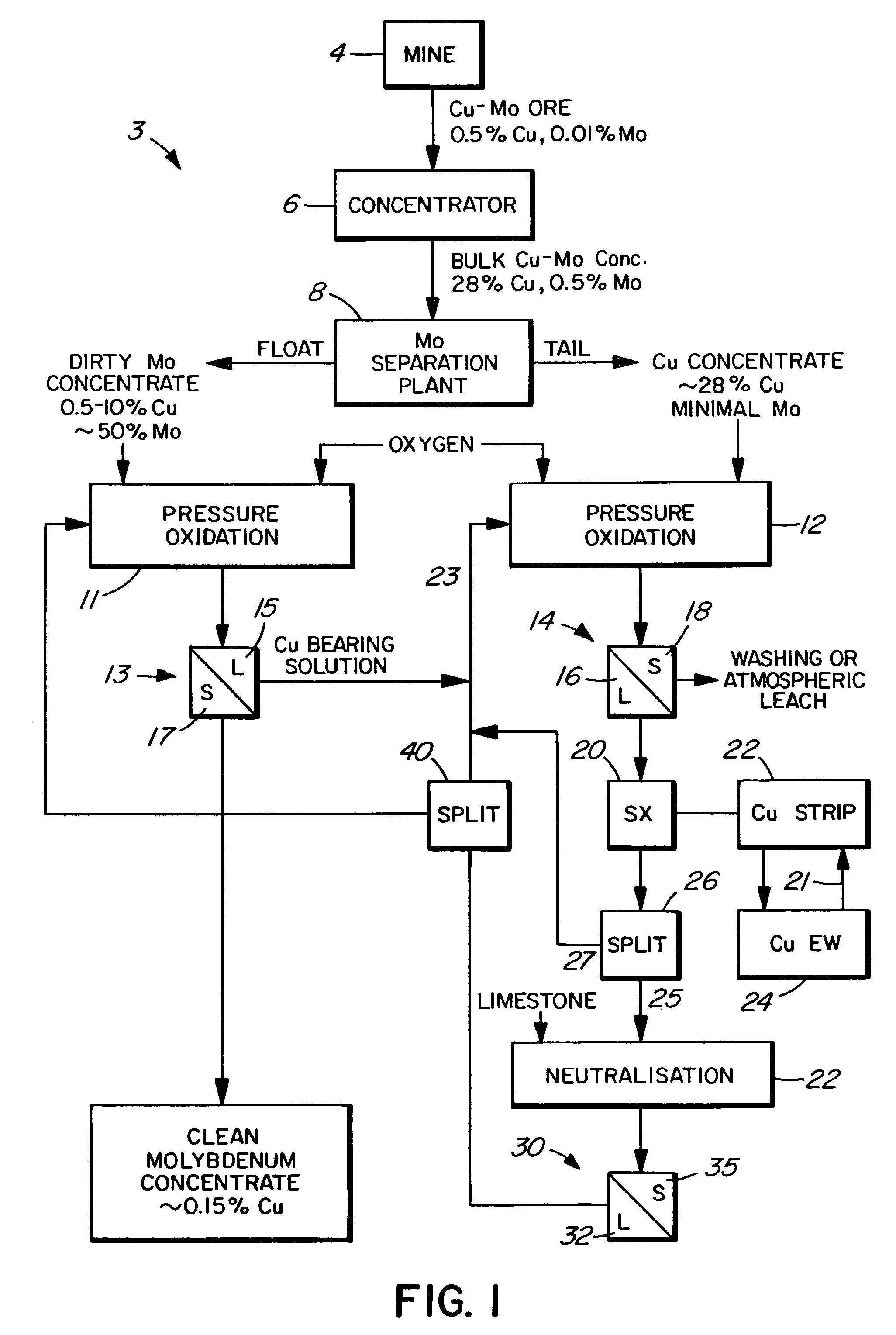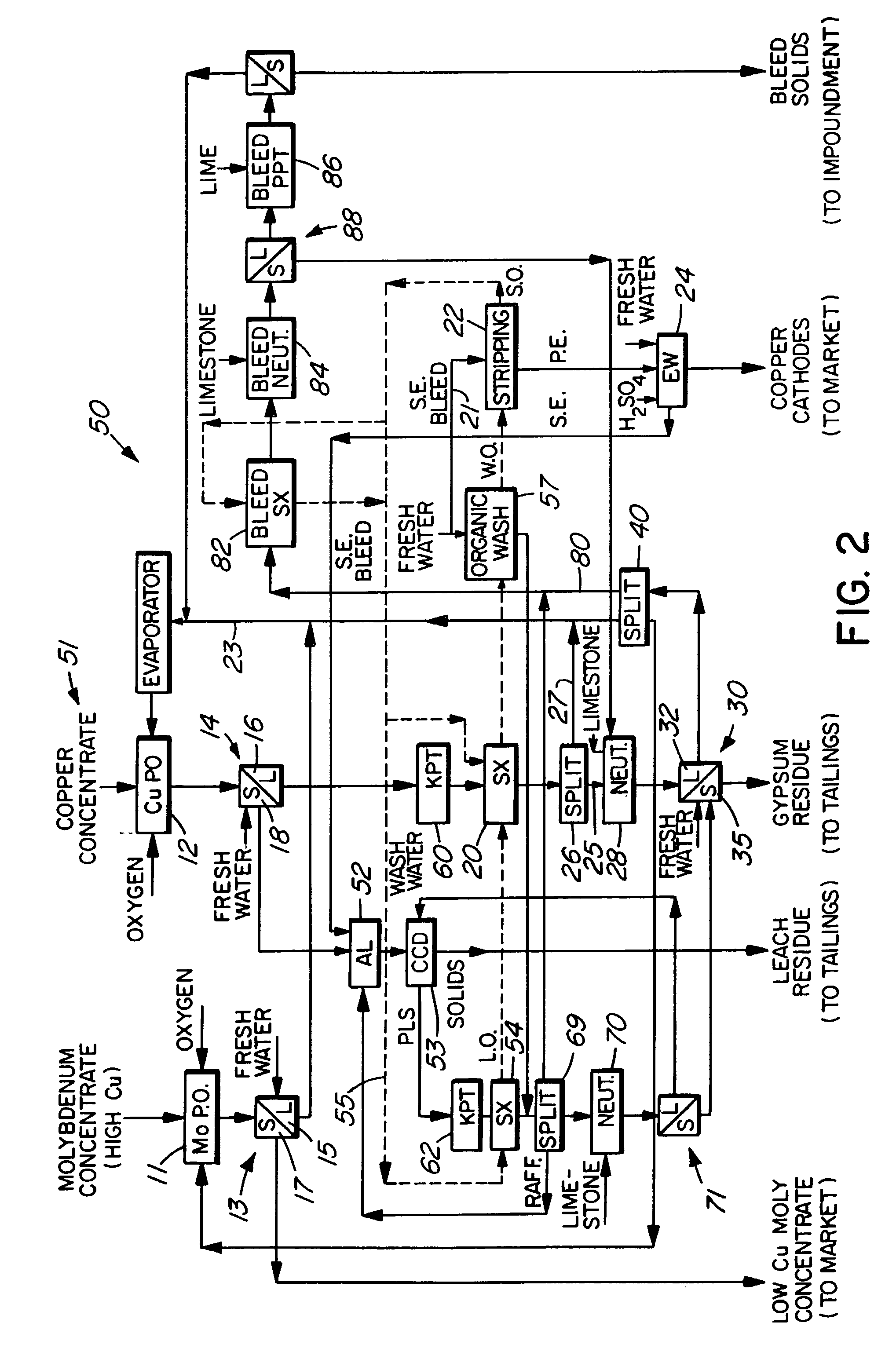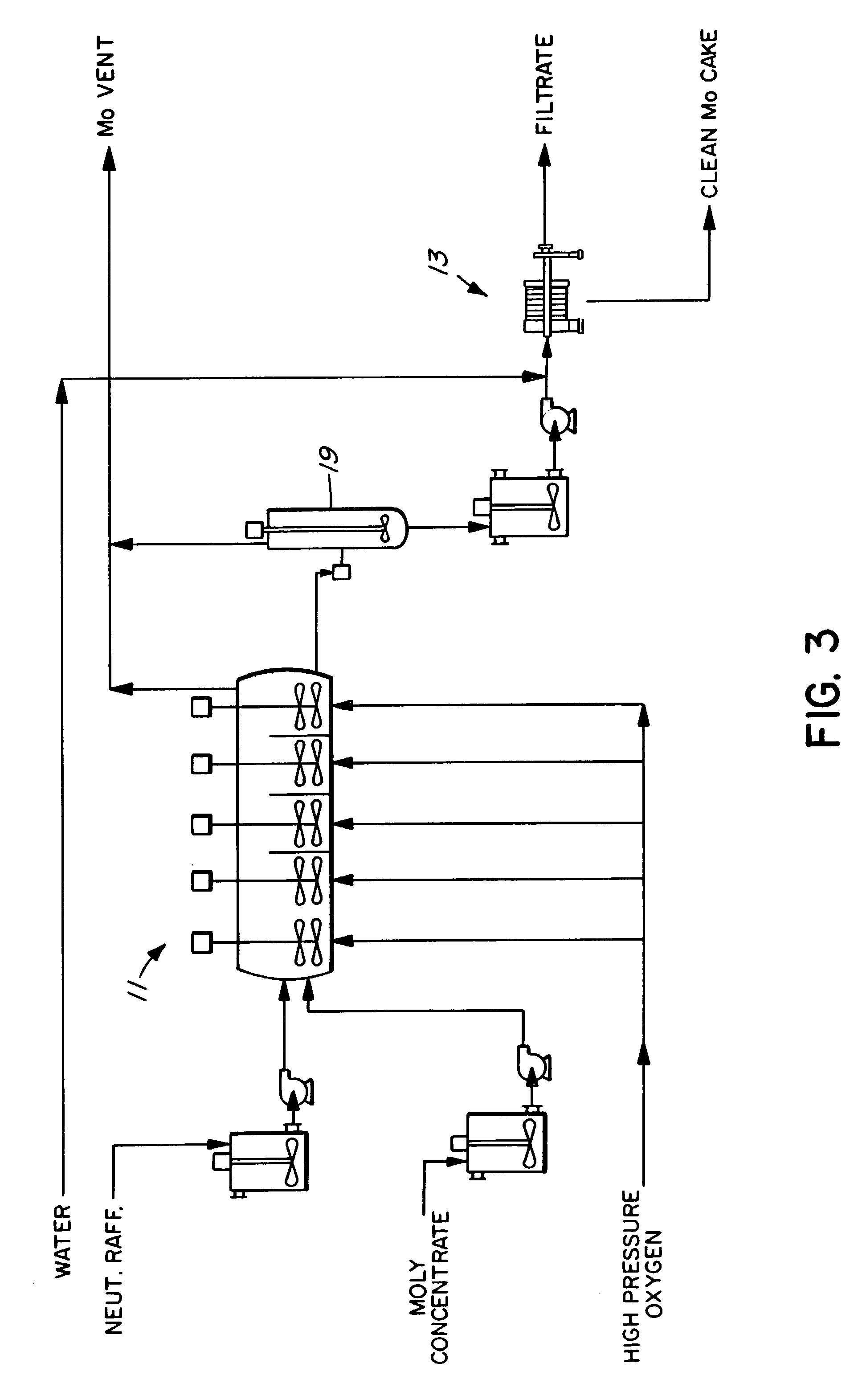Process for the treatment of molybdenum concentrate
- Summary
- Abstract
- Description
- Claims
- Application Information
AI Technical Summary
Benefits of technology
Problems solved by technology
Method used
Image
Examples
example 1
[0059]A molybdenite concentrate, containing 45.2% Mo, 3.6% Cu, 3.6% Fe and 34.2% total sulphur, was subjected to pressure oxidation at 500 g / L solids density, using a feed solution containing 15 g / L Cu, 12 g / L C1 and 20 g / L free acid. The pressure oxidation was carried out at 150° C. at 200 psig (1480 Kpa) total pressure for a retention time of one hour.
[0060]After the pressure oxidation, the product slurry was filtered and the residue was washed with water. The pH of the filtrate was 0.91. The filtrate contained 31.34 g / L Cu, 3.64 g / L Mo and 5.87 g / L iron. Copper and molybdenum extraction was 96.2% and 1.6%, respectively (The copper extraction is solid based; the molybdenum extraction is solution based).
example 2
[0061]In another test the same Mo concentrate was subjected to pressure oxidation under the same conditions as above, except that the feed solution contained no free acid. The pH of the filtrate from the pressure oxidation was 1.06. The filtrate contained 33.04 g / L Cu, 6.64 g / L Mo and 7.24 g / L iron. Copper and molybdenum extraction was 95.2% and 2.7%, respectively.
example 3
[0062]In another test the same Mo concentrate was subjected to pressure oxidation under the same conditions as above, except that the feed solution contained 30 g / L free acid. The pH of the filtrate from the pressure oxidation was 1.03. The filtrate contained 30.60 g / L Cu, 3.04 g / L Mo and 6.16 g / L iron. Copper and molybdenum extraction was 94.1% and 1.3%, respectively.
[0063]As can be seen from the above three examples, high copper extraction is obtained while molybdenum extraction (representing Mo loss from the concentrate) is low.
PUM
| Property | Measurement | Unit |
|---|---|---|
| Temperature | aaaaa | aaaaa |
| Temperature | aaaaa | aaaaa |
| Temperature | aaaaa | aaaaa |
Abstract
Description
Claims
Application Information
 Login to View More
Login to View More - R&D
- Intellectual Property
- Life Sciences
- Materials
- Tech Scout
- Unparalleled Data Quality
- Higher Quality Content
- 60% Fewer Hallucinations
Browse by: Latest US Patents, China's latest patents, Technical Efficacy Thesaurus, Application Domain, Technology Topic, Popular Technical Reports.
© 2025 PatSnap. All rights reserved.Legal|Privacy policy|Modern Slavery Act Transparency Statement|Sitemap|About US| Contact US: help@patsnap.com



